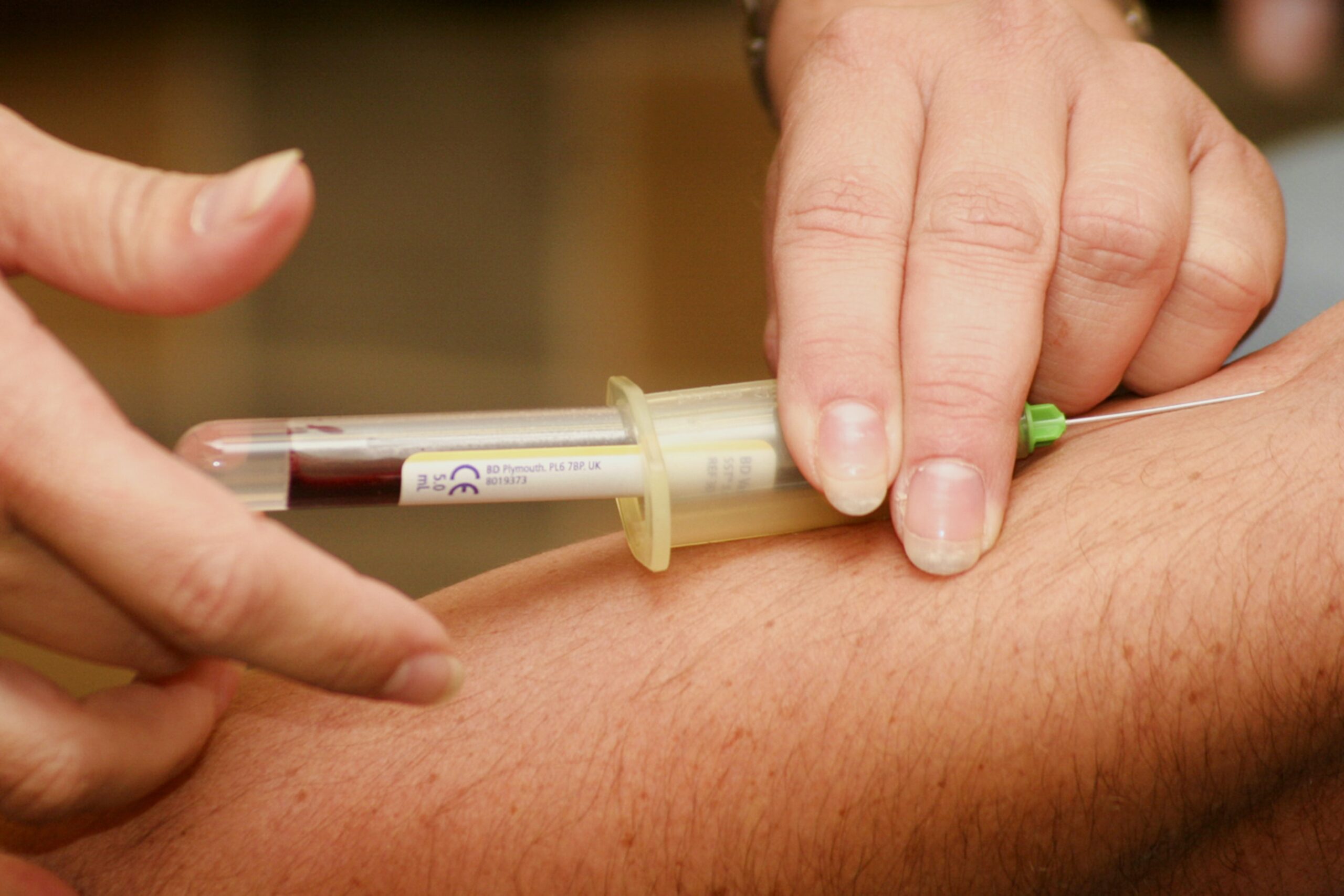If you’re considering getting varicose vein treatments and you don’t have insurance, you’re probably wondering about the costs. It’s a valid concern, as medical procedures can often come with hefty price tags. So, let’s explore the expenses of varicose vein treatments without insurance and see what options are available to you. By the end, you’ll have a better understanding of what to expect and how to navigate this process.

join our newsletter to get alerts
Factors Affecting the Costs
When it comes to the costs of varicose vein treatments without insurance, there are several factors that can influence the overall expenses. It’s essential to consider these factors before undergoing any treatment to ensure you have a comprehensive understanding of what to expect financially.
Severity of Varicose Veins
The severity of your varicose veins is one of the primary factors that can impact the costs of treatment. Mild cases that only require minimal intervention, such as sclerotherapy, may be more affordable compared to severe cases that necessitate more invasive procedures like ambulatory phlebectomy.
The extent of varicose veins in terms of size, number, and location can determine the complexity of the treatment, which ultimately affects the costs involved.
Type of Treatment
There are various treatment options available for varicose veins, and each comes with its own price range. Some common treatments include sclerotherapy, laser ablation, endovenous radiofrequency ablation, endovenous laser treatment, and ambulatory phlebectomy.
The complexity and technique required for each treatment can vary, leading to differences in cost. It’s important to consult with a healthcare professional who specializes in vein treatments to determine the most suitable option for your specific case.
Geographical Location
Where you reside can also have an impact on the costs of varicose vein treatments. Prices for medical procedures can vary significantly from one region to another. Urban areas with higher costs of living and greater demand for healthcare services may have higher treatment costs compared to rural areas.
It’s advisable to research and compare prices in your specific locality to get an idea of the average costs you can expect to pay.
Medical Facility
The type of medical facility you choose for your varicose vein treatment can play a role in determining the costs. High-end private clinics or hospitals may charge more for their services compared to public healthcare facilities.
It’s important to note that while private facilities may have higher costs, they often offer more amenities and a more personalized experience. On the other hand, public hospitals or community clinics may be more affordable but may have longer wait times or limited resources.
Doctor’s Experience
The level of experience and expertise of the doctor performing the varicose vein treatment can influence the costs as well. Highly experienced and reputable doctors may charge higher fees for their services due to their expertise and track record of successful treatments.
It’s essential to find a qualified and experienced doctor who specializes in vein treatments to ensure the best possible outcome. While their fees may be higher, the quality of treatment and reduced risks of complications may outweigh the initial costs.
Common Varicose Vein Treatments
Varicose veins can be treated through various methods, depending on the severity of the condition and the patient’s specific needs. Here are some of the most common treatments available:
Sclerotherapy
Sclerotherapy is a non-surgical treatment option that involves injecting a solution directly into the affected veins. This solution causes the veins to collapse and eventually fade away. Sclerotherapy is often recommended for smaller varicose veins or spider veins.
The cost of sclerotherapy can vary depending on the number of veins being treated and the complexity of the condition. On average, the cost per session ranges from $200 to $500.
Laser Ablation
Laser ablation, also known as endovenous laser treatment (EVLT), is a minimally invasive procedure. It involves using laser energy to close off the affected vein, causing it to collapse and be reabsorbed by the body. Laser ablation is commonly used for larger varicose veins.
The cost of laser ablation can vary depending on the number and size of veins being treated. On average, the cost ranges from $1,500 to $4,000 per leg.
Endovenous Radiofrequency Ablation
Endovenous radiofrequency ablation (RFA) is a similar procedure to laser ablation but uses radiofrequency energy instead. This treatment involves using a catheter to deliver the energy to the affected vein, causing it to close and eventually disappear.
The cost of endovenous radiofrequency ablation can range from $2,000 to $6,000 per leg, depending on the complexity of the condition and the geographic location.
Endovenous Laser Treatment
Endovenous laser treatment (ELT) is another minimally invasive procedure used to treat varicose veins. It involves inserting a laser fiber into the affected vein and delivering laser energy to seal it off. ELT is often recommended for larger and more complex varicose veins.
The cost of endovenous laser treatment can range from $2,000 to $6,000 per leg, depending on the specific case and location.
Ambulatory Phlebectomy
Ambulatory phlebectomy is a surgical procedure used to remove large varicose veins through small incisions. This treatment is typically recommended for severe cases where non-invasive options are not suitable.
The cost of ambulatory phlebectomy can vary significantly depending on the complexity and number of veins being removed. On average, the cost ranges from $1,500 to $4,000 per leg.
Cost Breakdown by Treatment
Now, let’s take a closer look at the cost breakdown for each specific treatment option:
Sclerotherapy
- Average cost per session: $200 to $500
- Additional sessions may be required, depending on the severity of the condition and the desired outcome.
Laser Ablation
- Average cost per leg: $1,500 to $4,000
- Additional procedures may be necessary for optimal results.
Endovenous Radiofrequency Ablation
- Average cost per leg: $2,000 to $6,000
- Additional costs may be associated with the use of catheters and radiofrequency equipment.
Endovenous Laser Treatment
- Average cost per leg: $2,000 to $6,000
- Additional expenses may arise from the use of laser equipment and specialized fibers.
Ambulatory Phlebectomy
- Average cost per leg: $1,500 to $4,000
- Additional costs may be incurred for surgical supplies and anesthesia.
It’s essential to discuss the specific costs with your healthcare provider to get a more accurate estimate based on your individual case.
Additional Procedure Costs
In addition to the primary treatment costs, there are several other expenses that may be associated with varicose vein treatments. These can vary depending on your specific situation. Here are some additional procedure costs to consider:
Initial Consultation
Before undergoing any treatment, you will likely need to schedule an initial consultation with a specialist. This consultation allows the doctor to evaluate your condition and recommend the most appropriate treatment option. The cost of an initial consultation can range from $100 to $300.
Follow-up Appointments
After the initial treatment, follow-up appointments may be necessary to monitor your progress and ensure optimal results. The frequency and duration of these appointments can vary depending on the treatment and your individual needs. The cost of follow-up appointments can range from $50 to $200 per visit.
Compression Stockings
Compression stockings are often recommended after varicose vein treatments to help optimize circulation and prevent future vein issues. These stockings can range in price from $30 to $100 per pair, depending on the quality and brand.
Ultrasound Imaging
Before certain treatments, such as laser ablation or endovenous radiofrequency ablation, ultrasound imaging may be required to accurately locate and assess the affected veins. The cost of ultrasound imaging can range from $200 to $500, depending on the provider and location.
It’s important to factor in these additional procedure costs when considering the overall expenses of varicose vein treatments.

Case Studies
To provide a better understanding of the costs associated with varicose vein treatments, let’s explore three different case studies:
Case Study 1: Mild Varicose Veins, Sclerotherapy Treatment
Amy, a 35-year-old woman, has recently noticed a few small varicose veins on her legs. After consulting with a vein specialist, she opts for sclerotherapy treatment. Amy requires two sessions, each costing $300, for a total of $600. As her condition is relatively mild, she does not require additional follow-up appointments or procedures.
Case Study 2: Moderate Varicose Veins, Laser Ablation Treatment
John, a 50-year-old man, has been experiencing moderate varicose veins in his right leg. After consulting with a vein specialist, he decides to undergo laser ablation treatment. John requires two procedures and several follow-up appointments over the course of six months. The total cost of his treatment, including all sessions and appointments, comes to $4,500.
Case Study 3: Severe Varicose Veins, Ambulatory Phlebectomy Treatment
Emily, a 45-year-old woman, has been struggling with severe varicose veins in both of her legs for several years. She decides to undergo ambulatory phlebectomy to address her condition. Emily requires multiple procedures and follow-up appointments due to the complexity of her case. The total cost of her treatment, including all sessions and appointments, amounts to $7,000.
These case studies illustrate the different costs associated with varicose vein treatments depending on the severity of the condition and the specific treatment option chosen. It’s important to consult with a healthcare professional to determine the most suitable treatment plan and associated costs for your individual case.
Lower-Cost Options
If you are concerned about the costs of varicose vein treatments without insurance, there are some lower-cost options that you can explore. While these options may offer more affordable alternatives, it’s important to thoroughly research and consider the potential risks and benefits.
Community Clinics
Community clinics may offer more affordable varicose vein treatments compared to private clinics or hospitals. These clinics often provide services at reduced rates or on a sliding fee scale based on income. However, it’s important to inquire about the qualifications and experience of the healthcare professionals at these clinics to ensure you receive quality care.
Educational Medical Centers
Educational medical centers, such as teaching hospitals or research institutions, may offer varicose vein treatments at a lower cost. These centers often have resident doctors or medical students who perform procedures under the supervision of experienced physicians. While the costs may be reduced, it’s important to carefully consider the level of supervision and expertise provided in these settings.
Medical Tourism
For individuals willing to travel, medical tourism can be an option to explore. Some countries offer varicose vein treatments at significantly lower costs compared to the United States. However, it’s crucial to thoroughly research the medical facilities, doctors, and safety standards in the chosen destination before making any arrangements. Additionally, consider the potential additional expenses related to travel, accommodation, and post-treatment follow-up care.
It’s important to weigh the potential cost savings against the risks and limitations associated with these lower-cost options. Consulting with a healthcare professional can help you make an informed decision regarding the most suitable choice for your specific needs.
Financing Options
If the costs of varicose vein treatments without insurance seem overwhelming, there are various financing options available to help manage the expenses. Here are some common options to consider:
Medical Credit Cards
Medical credit cards, specifically designed for healthcare expenses, can help you cover the costs of varicose vein treatments. These cards often offer promotional financing options, such as zero or low-interest rates for a certain period. It’s important to carefully review the terms and conditions of these credit cards to ensure you understand the repayment terms and any potential fees.
Payment Plans
Many medical facilities and healthcare providers offer payment plans to help patients manage the costs of treatments. These plans allow you to divide the total expenses into manageable monthly payments over a set period. It’s important to inquire about the terms and conditions of these payment plans, including any interest or additional fees that may be associated.
Flex Spending Accounts
If you have a flexible spending account (FSA) through your employer, you can use these funds to cover varicose vein treatments. FSAs allow you to set aside pre-tax dollars from your paycheck to use for eligible medical expenses. It’s important to check with your employer or benefits administrator to ensure varicose vein treatments are covered under your FSA.
Personal Loans
If none of the above options are viable, you may consider obtaining a personal loan to cover the costs of varicose vein treatments. Personal loans can provide a lump sum of money that can be used to pay for medical expenses. However, it’s important to carefully evaluate the interest rates, repayment terms, and any associated fees before taking out a personal loan.
Discussing your financial concerns with the healthcare provider or their billing department may also be helpful, as they may be able to provide advice or guidance on available financing options.
Tips for Cost Savings
When it comes to managing the costs of varicose vein treatments without insurance, there are several tips and strategies that can help save money. Here are some recommendations to consider:
Shop Around for Prices
Take the time to research and compare prices from different medical facilities and healthcare providers in your area. Prices can vary significantly, and by shopping around, you may find more affordable options without compromising on the quality of care.
Consider Multiple Opinions
Before committing to a specific treatment plan, consider seeking multiple opinions from different healthcare professionals. This can help you gain different perspectives on your condition and potential treatment options, allowing you to make a more informed decision.
Seek Insurance Coverage Options
While you may not have health insurance specifically covering varicose vein treatments, it’s worth exploring if your insurance plan offers any coverage for related procedures or consultations. Some insurance plans may provide partial or full coverage for diagnostic ultrasounds or consultations with specialists.
Check for Special Offers or Promotions
Keep an eye out for special offers or promotions from medical facilities or healthcare providers. They may occasionally offer discounted rates or packages for varicose vein treatments. Signing up for newsletters or following their social media accounts can help you stay informed about any potential cost-saving opportunities.
Discuss Payment Plans with the Doctor
If you are concerned about the financial aspects of your varicose vein treatment, don’t hesitate to discuss payment plans or potential cost-saving strategies with your doctor. They may be able to provide guidance or assistance in finding ways to make the treatment more affordable.
Risks of Choosing Based on Cost Alone
While it’s understandable to consider the costs when choosing varicose vein treatments without insurance, it’s important to recognize the potential risks of making decisions based solely on cost:
Quality of Treatment
Opting for a lower-cost treatment option may come with compromises in terms of the quality of care provided. It’s crucial to thoroughly research and consider the qualifications and experience of the healthcare professionals involved to ensure you receive safe and effective treatment.
Experience and Skill of the Doctor
Choosing a doctor with limited experience or expertise in vein treatments may increase the risk of complications and less optimal outcomes. It’s important to prioritize the qualifications and reputation of the doctor over cost alone, as the expertise of the healthcare professional greatly influences the success of the treatment.
Potential Complications and Long-Term Costs
Cutting corners on costs may lead to potential complications or unsuccessful outcomes, which could result in additional expenses in the long run. It’s crucial to carefully weigh the potential risks and benefits when making decisions based on cost alone.
Conclusion
While varicose vein treatments without insurance can be costly, there are various factors that influence the overall expenses. By considering the severity of varicose veins, the type of treatment, geographical location, medical facility, and doctor’s experience, you can better understand the cost breakdown.
Additionally, exploring lower-cost options such as community clinics, educational medical centers, or medical tourism, as well as considering financing options like medical credit cards, payment plans, flex spending accounts, or personal loans, can help manage the expenses.
It’s important to remember that choosing a treatment based solely on cost can have potential risks, including compromised quality of treatment, experience of the doctor, and potential long-term costs. Prioritizing the qualifications and expertise of the healthcare professional is crucial for achieving optimal outcomes.
Understanding the costs and exploring various strategies for cost savings can help individuals make informed decisions about varicose vein treatments without insurance, ensuring access to effective and safe care for this common condition.


